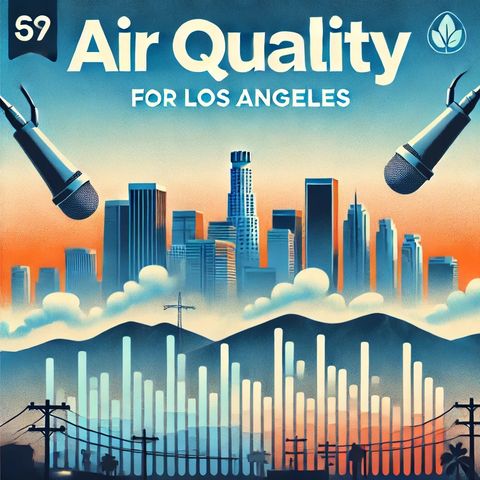Los Angeles Navigates Fluctuating Air Quality Driven by Emissions, Meteorology, and Ongoing Challenges

Descarga y escucha en cualquier lugar
Descarga tus episodios favoritos y disfrútalos, ¡dondequiera que estés! Regístrate o inicia sesión ahora para acceder a la escucha sin conexión.
Descripción
Los Angeles, renowned for its perpetually sunny weather and vibrant lifestyle, often grapples with fluctuating air quality, driven by a multitude of factors including vehicular emissions, industrial activities, and geographic...
mostra másAs of today, Los Angeles is experiencing moderate air quality conditions, an improvement from the unhealthy levels often reported during peak traffic times and warmer days, when ozone and particulate concentrations tend to rise. Various monitoring stations distributed across the city and its suburbs indicate an Air Quality Index, or AQI, typically ranging from 51 to 100. This index highlights that while the air quality is generally acceptable, there may be some concerns for particularly sensitive individuals such as those with pre-existing respiratory conditions, the elderly, and children, who may experience minor symptoms upon extended exposure.
A significant contributor to today's air quality is the interplay of meteorological factors. The cooler autumn temperatures, combined with occasional onshore winds, help to disperse pollutants more effectively than during the sweltering summer months when stagnant air often leads to smog formation. However, the topography of Los Angeles, enclosed by mountains to the east, can still foster conditions where pollutants linger.
Efforts have been made over past years to mitigate air pollution through various regulations and technological advancements, including stricter emissions standards for vehicles and industries, improvements in public transport infrastructure, and initiatives to promote electric vehicles and renewable energy sources. The results of these efforts are gradually reflected in the air quality data, evidencing long-term trends toward cleaner air compared to past decades when Los Angeles frequently topped the charts for air pollution.
However, challenges remain, especially as urban expansion continues and the demand for vehicle use persists. Wildfires, which are becoming more common and intense in California, pose another threat to air quality. Smoke from such fires can rapidly elevate particulate levels, sometimes making the air hazardous to breathe. Fortunately, no such events are currently affecting the Los Angeles basin, contributing to the relatively stable air quality.
Residents can take proactive measures to further improve air quality by minimizing car use, especially on days when meteorological conditions suggest potential pollution spikes, and by staying informed through local air quality resources and advisories. Community engagement and adherence to environmental guidelines remain essential for sustaining air quality improvements and protecting public health.
Overall, today's air quality scenario in Los Angeles is emblematic of progress made and the continued vigilance necessary to maintain and further that progress. As Los Angeles pursues its goal to become a more environmentally sustainable city, ongoing efforts will remain crucial to overcoming the unique challenges posed by its size, geography, and climate.
Información
| Autor | QP-5 |
| Organización | William Corbin |
| Página web | - |
| Etiquetas |
Copyright 2024 - Spreaker Inc. an iHeartMedia Company

Comentarios